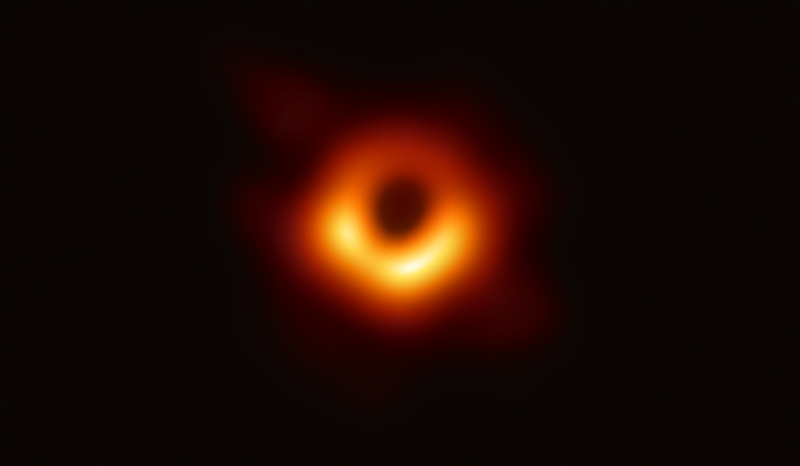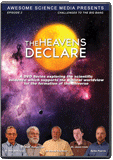
A Picture Is Worth a Thousand Words
The first "photo" of a black hole, the accretion disk around the black hole, and how biblical creationists sometimes understand black holes
Many people have asked me about the 2019 announcement of the first photograph of a black hole. Their main question has been how we can take a photograph of an object that doesn’t give off any light. Indeed, that has been the sort of question about black holes that I’ve been asked many times over the years: If we can’t see them, how do we know that they exist? The simple answer is that we generally believe in many things that we don’t see. Electrons, air, and wind quickly come to mind. While we can’t see these things, there is abundant evidence for their existence by the observable effect that they have on other things. The same is true of black holes. I have a presentation that I give titled “Things that Go Bump in the Night” (also available as a DVD). This talk is about dark matter and dark energy too, but I spend the first half of the presentation talking about black holes.
Seeing the Impossible
So, how do we detect black holes? By the effect that their immense gravity has on nearby objects. For instance, as matter falls toward a black hole, the matter flattens into an orbiting disk. Friction robs the matter of orbital energy, causing the matter to orbit ever closer to the black hole. Paradoxically, the orbital speed increases as the matter falls inward. The energy lost to friction is transformed into heat, raising the temperature to millions of degrees. One way we detect black holes is by observation of x-rays coming from the hot inner portion of these disks. X-rays are difficult to produce in copious amounts, so x-ray sources of this type are relatively easy to spot. The measured orbital speed allows astronomers to compute the mass of a black hole. Astronomers have been detecting black holes this way for a half century.
This first photograph of a black hole wasn’t a photograph of a black hole, but rather the accretion disk around a black hole (since the matter in the orbiting disk is infalling, we call the disks around black holes “accretion disks”). The accretion disks around stellar-sized black holes are relatively small. Hence, from the distances that we observe black holes, the accretion disks of stellar-sized black holes would be too small to image. What astronomers needed were the much larger accretion disks that are around the monster supermassive black holes that reside at the centers of most galaxies. For this study, astronomers selected the black hole at the center of M87, a giant elliptical galaxy about 55 million light years away. The mass of its black hole is about 7 billion times the mass of the sun.

Image credit: Event Horizon Telescope Collaboration
However, the problem with these accretion disks is that there is much matter in the cores of galaxies surrounding their supermassive black holes that interfere with light coming from the accretion disks. To get around this problem, the astronomers observed at a wavelength of 1.3 millimeters, a portion of the radio spectrum that is largely unaffected by this intervening matter. But then another problem arises. Due to their long wavelengths, radio waves yield a very poor resolution, resulting in fuzzy images. To circumvent this problem, the radio astronomers combine the data from several widely spaced radio telescopes. This technique is called very-long-baseline interferometry (VLBI). While VLBI has been around for decades, very recent improvements in computer technology have made this sort of high resolution possible. The study in question used eight radio telescopes around the world in a system called the Event Horizon Telescope. Given the wavelength of observation and the configuration of the radio telescopes, the resolution of this project was 25 millionths of an arcsecond. At the distance of M87, this corresponds to 400 astronomical units (the astronomical unit, or AU, is the average distance between the earth and sun— roughly 150 million kilometers (93 million miles)). That is, something that is 400 times larger than the earth’s orbital radius would show up. The accretion disk was expected to be far larger than this, so it ought to show up in the radio image.
This is an awesome image and worthy of note. But press accounts have been a bit misleading.
As it can be seen in the image, the accretion disk shows up as a ring. It is tempting to think that the dark spot in the middle is the black hole. However, this dark spot is 2.6 times the size of the black hole. This dark spot is compared to a shadow of the black hole. The light coming from the region within the dark spot but outside the black hole is drastically bent out of our line of sight by the black hole’s gravity. This is an awesome image and worthy of note. But press accounts have been a bit misleading. After all, since photographs are images of light (in this case, radio emission), and black holes give off no light, we can’t directly photograph a black hole. But we can see the shadow of a black hole here. Thus, this first photograph is big news.
Coming Soon: A Black Hole Near You
Expect an image of the supermassive black hole at the center of our own galaxy to be announced soon. The same team also observed the goings-on at the center of the Milky Way. The Milky Way black hole is much less impressive, only about 4 million times the mass of the sun, or about one-thousandth the mass of the black hole at the center of M87. But our black hole is much closer – 25,000 light years as opposed to 55 million light-years (about one two-thousandths the distance), so its accretion disk ought to be viewable.
Conclusion
What does this all mean with regards to evolution/creation? Probably not much. I’ve found that many creationists are leery of black holes. This suspicion likely is fueled by discussions of black holes accompanied by speculation about their origin. However, there is an excellent case to be made for the existence of black holes apart from any ideas of how they came to be. From my perspective, black holes are a very cool part of God’s creation.
Recommended Resources

Answers in Genesis is an apologetics ministry, dedicated to helping Christians defend their faith and proclaim the good news of Jesus Christ.
- Customer Service 800.778.3390
- © 2024 Answers in Genesis




